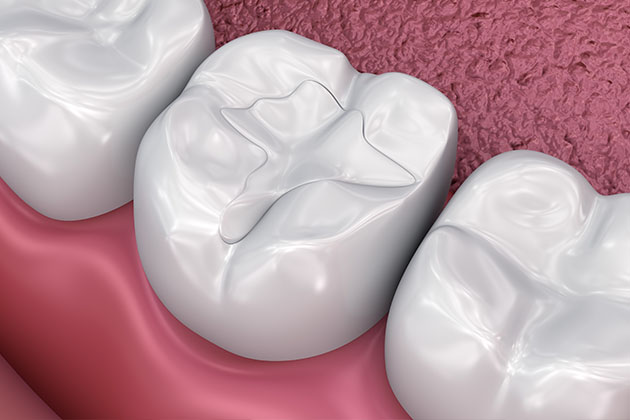Zinātnieki kompozītmateriālā pildījuma materiālā ir iekļāvuši nanomateriālu, kam piemīt antibakteriālas īpašības. Šis jaunais plombēšanas materiāls var efektīvi novērst virulentu baktēriju izraisītu zobu dobumu atkārtošanos.
Zobu bojāšanās (sauca zobu cavities or dental caries) is a very common and widespread baktēriju disease in school-going children and adults. Virulent baktērijas tāpat Streptococcus mutans accumulate on the surface of the tooth and start to dissolve hard tissues. Once baktērijas settle on the tooth surface, it leads to secondary (or recurrent) tooth decay at the edges of dental Uzpildīšana due to production of acid by cavity-causing baktērijas which now reside in the interface of dental filling and the tooth. Tooth decay caused by bacteria is responsible for failure of dental restoration material affecting 100 million patients every year. Recurrent tooth cavities and decay leads to tooth extraction and root canal treatments.
Agrāk zobu restaurācijai izmantoja amalgamas plombas, kas sastāvēja no metālu sakausējumiem. Šiem pildījumiem bija daži antibakteriāls ietekme, bet arī trūkumi bija vienkrāsains, dzīvsudraba toksicitāte un adhēzijas trūkums pie zoba. Tagad kompozītmateriālus izmanto zobu atjaunošanas materiālos, taču tiem trūkst antibakteriālo īpašību, kas ir būtisks trūkums. Arī pakāpeniska šķīstošo vielu izdalīšanās no sveķiem ietekmē to mehāniskās īpašības, kā rezultātā veidojas poraini vai vāji sveķi. Daudzi no pārbaudītajiem kombinētajiem materiāliem ir ierobežoti un var būt toksiski blakus esošajiem audiem, jo īpaši tāpēc, ka tiem nepieciešama liela deva. Kompozītmateriālu pildījumi uz sveķu bāzes, kam piemīt baktēriju inhibējoša iedarbība, var novērst tādu plaši izplatītu mutes slimību attīstību kā zobu bojājums.
Pētījumā, kas publicēts 28. maijā ACS lietišķie materiāli un saskarnes, researchers describe a new enhanced material having intrinsic potent antibakteriāls capabilities which can be used for novel dental fillings to prevent recurrent tooth decay. Same team of researchers had discovered in their earlier work that self-assembling building block Fmoc-pentafluro-L-phenylalanine-OH (Fmoc) has potent antibakteriāls and also anti-inflammatory properties. And, it contains both functional and structural subparts. In the current study, researchers functionally incorporated Fmoc nanoassemblies inside resin-based dental composite material using novel methods developed by them.
Jūsu darbs IR Klientu apkalpošana antibakteriāls capabilities of this new filling material was subsequently evaluated. Researchers also analysed its mechanical strength, optical properties and biocompatibility. When resin-based composites are added with antibacterial nano-assemblies it gets the ability to inhibit and hinder growth and viability of baktērijas. The new material was non-toxic and the mechanical or optical properties of the nanaoassemblies remains unaffected by the integration. The antibacterial activity against bacterium S mutans nepieciešama ļoti maza jaunā materiāla deva.
The current study demonstrates antibakteriāls activity of Fmoc nanoassemblies and its functional incorporation into dental resin composite filling to develop a biocompatible resin composite amalgamated material. The new filling material is pleasant looking, mechanically rigid, has high purity, is inexpensive and can be easily embedded within resin-based filling materials.
***
{Jūs varat izlasīt oriģinālo pētījumu, noklikšķinot uz DOI saites, kas norādīta tālāk citēto avotu sarakstā}
Avots (-i)
Schnaider, L. et al. 2019. gads. Uzlaboti ar nanomontāžu saistīti antibakteriālie kompozītmateriāli. ACS lietišķie materiāli un saskarnes. 11 (24). https://doi.org/10.1021/acsami.9b02839






































